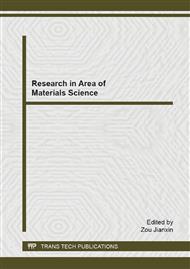p.3
p.7
p.12
p.16
p.22
p.27
p.31
p.37
Research on the Energy Conservation and Emission Reduction Technologies in First Washing Wastewater
Abstract:
In recent years, large amounts of wastewater are mostly discharged directly to environment without being properly treatment in many washing industry, bringing tremendous damage to the environment. From the perspective of reducing energy consumption of washing waste water treatment, the first washing wastewater containing the highest pollutant concentration are tested properly, the second and third washing wastewater could be recycled. In this research, the treatment effects of six coagulants are tested, the appropriate coagulant and an economic treatment scheme of first washing wastewater are developed according to the characteristics of wastewater. Adopting the method of centralized treatment, by which we can reduce water consumption and carbon emissions and can be used in the small and medium-sized enterprise of washing industry.
Info:
Periodical:
Pages:
12-15
Citation:
Online since:
April 2015
Authors:
Price:
Сopyright:
© 2015 Trans Tech Publications Ltd. All Rights Reserved
Share:
Citation:


